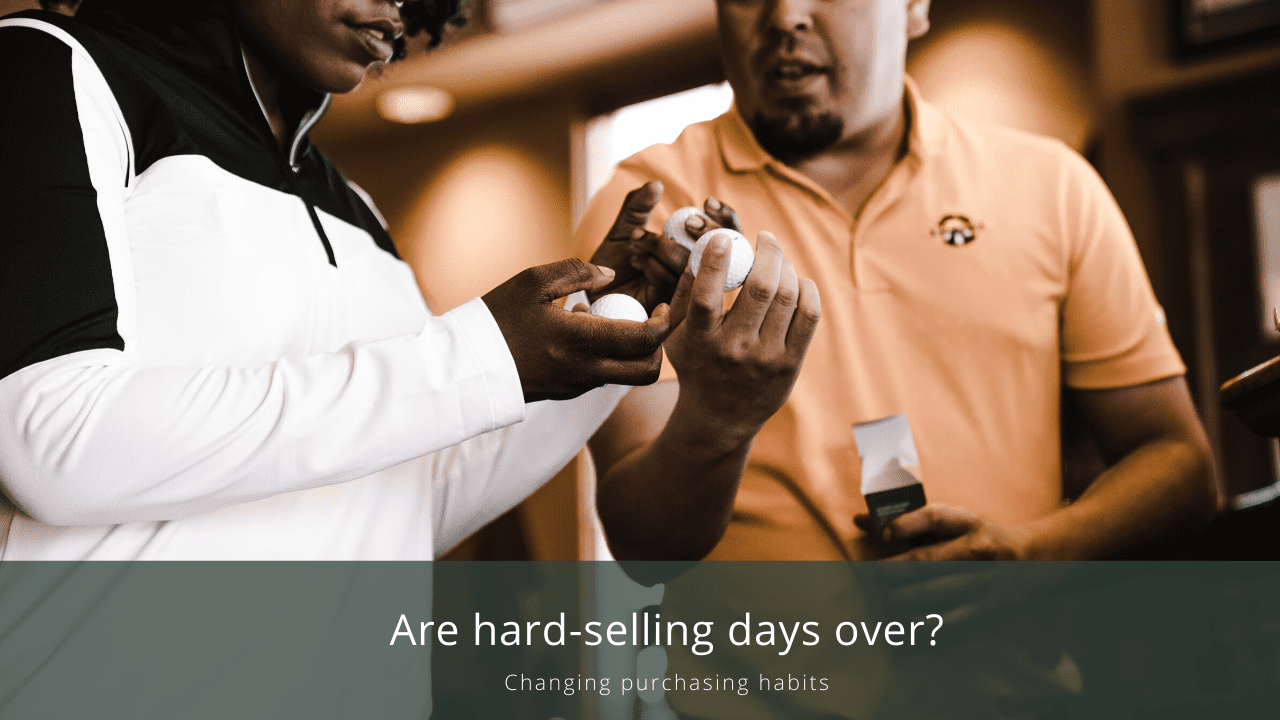Traditionally, we characterise hard-selling as an overtly direct sales approach. Honed for decades, this method can include cold-calling, aggressive advertising, and attempts to play on a consumer’s fears. For example, a salesperson might try and convince a customer that a particular model is limited. If they wait, they could miss out or end up paying more. Hard-selling is geared towards pushing people into making impulsive purchasing decisions. For numerous reasons, this technique is falling out of favour with sales experts and customers alike.
Hard-selling went too far

Before the internet, consumers had fewer reliable sources of information to turn to before making a purchasing decision. While the internet would change this dramatically, hard-sellers immediately began to abuse our new and improved connectivity. Email costs nothing compared to posting physical advertisements, so advertisers had no limits to how many they could send. With thousands of advertisers sending everybody high volumes of untargeted marketing material, people began to tire of it quickly. It wasn’t long before these emails earned their current nickname; spam.
Alongside spam emails, internet marketers made frequent use of “pop-ups”, frustrating advertisements that appeared while users browsed the web. For website owners, more ads meant more money, so they were happy to allow it. Over the years, internet users have become increasingly frustrated with these techniques, associating them with untrustworthy companies.
We explore how PR builds consumer trust and why it matters.
Purchasing habits have changed

Today, consumers have become empowered by the volume of information they can access online. Before making a purchase, most people conduct thorough research, so they’re less likely to make a spur-of-the-moment decision. This also limits the ability of a hard-seller to provide false information to force a quick sale. Consumers also turn to professional and personal reviews for guidance, allowing them to rely on first-hand experience.
Governments have also cracked down on spamming, primarily in the interest of data privacy and protection. The European Union’s GDPR policy makes it nearly impossible for companies to contact individuals without express permission. Companies who rely on spam are essentially crippled, and even renowned enterprises have fallen foul of new regulations. Some businesses have lamented these changes, but modern sales experts are nearly unanimous in their opinion. The days of hard-selling are over. If this is the case, how can a company successfully reach new customers online?
A new age of selling online

Fortunately, marketing has moved with the times, and there are still plenty of ways to sell online. The most profound shift has been from outbound to inbound marketing. Before, companies would cast a wide net over unqualified leads in the hope of making sales. Now, companies are organically attracting qualified leads through great content. By giving customers something for nothing, like a blog or ebook, they’ll turn to you for future advice. If they begin to trust you, they’ll start to buy from you. It’s important to let people make buying decisions in their own time. While you can still make attempts to sell actively, they should be carefully timed and not pushy.
We discuss how technology is making PR relevant for startups.
Another smart way to gain attention is to invest in a proper public relations approach. By utilising traditional and social media, it’s possible to increase your brand’s reputation naturally. A strong campaign in the right channels will generate enough buzz to attract new customers. It’s critical to build a connection between your brand and the consumer.
While traditional methods of advertising are becoming ineffective, that doesn’t mean you shouldn’t advertise online. These days, you can target specific groups of consumers. By using targeted ads, you can reach people who are already likely to be interested in what you offer. Additionally, people who aren’t in your target audience won’t be annoyed that they’re seeing irrelevant content. Even if someone isn’t a likely customer, their perception of you is still valid from a PR angle.
Marketing to smart buyers

We are living in an era where we market to smart buyers. Consumers today value trust, honesty, and choice – three things that have always been missing from hard-selling. By understanding what consumers like and putting their desires first, you’ll start to attract the right customers. Furthermore, a customer gained through an organic, soft-selling approach is far more likely to buy again.
For companies wishing to grow, repeat business is preferable to short-term gains from customers under pressure. Lastly, it’s crucial to continue to innovate in order to maintain the connection between consumers and your brand. Sales and marketing in the online world are continuously evolving, as seen with the transition away from hard-selling. By remaining alert and adaptable, you’ll be able to successfully sell to delighted customers, regardless of new trends.
Speak to a SYNC consultant to learn more about emerging trends in PR and marketing. Drop us an email at hello@syncpr.co
This article has been updated on 10 June 2020

